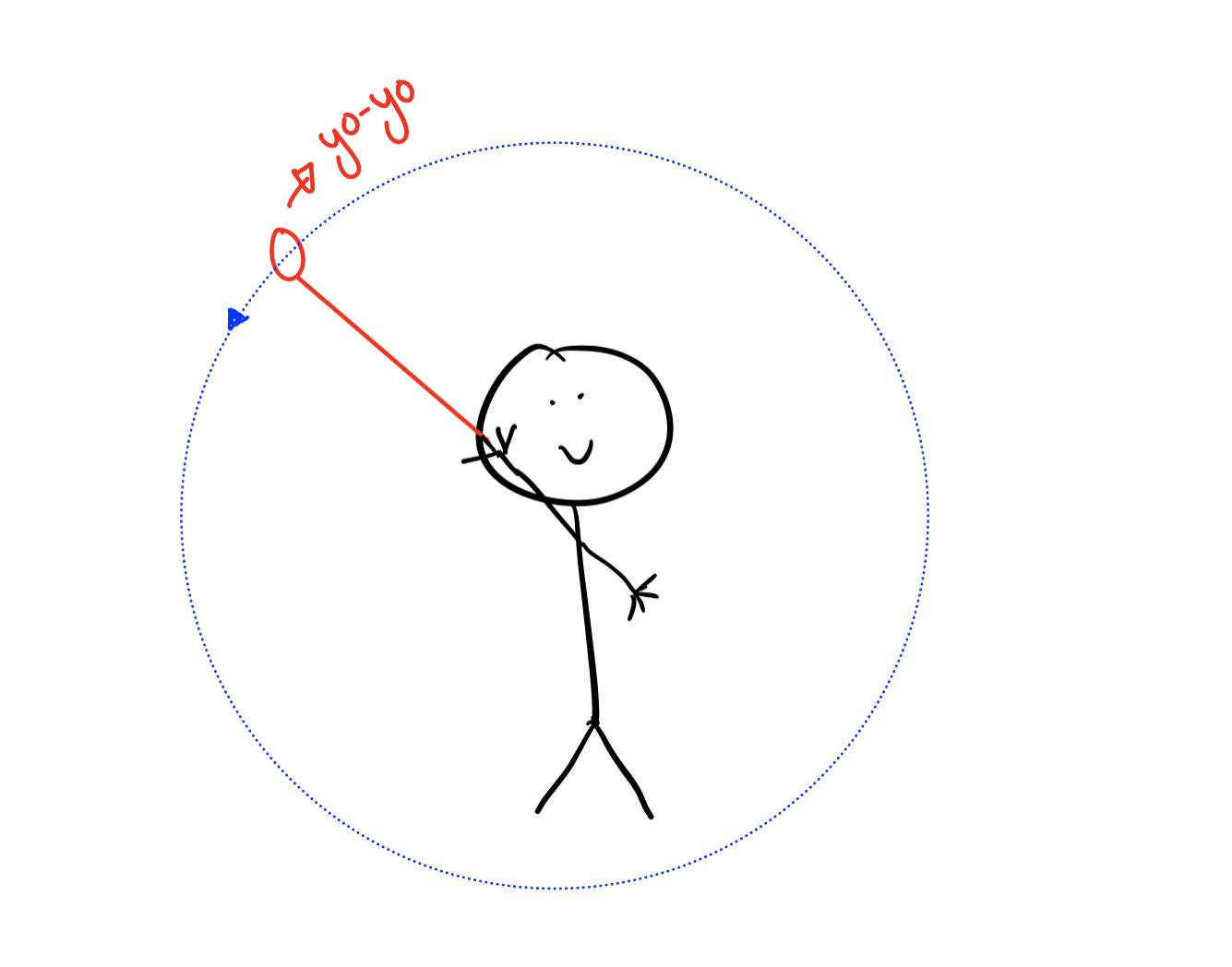Today we're going to get everything ready to launch our spacecraft (hopefully) from my homeplanet to planet 0 after simulating the trajectory.
This challenge will be done threefold.
- We'll write a generalized orbital trajectory simulation
- We'll plan the journey to the destination planet using simulations made.
- We'll launch the spacecraft and adjust the planned trajectory mid-air and travel to the destination
First let's talk about stable orbits. A stable orbit of a satellite around earth is when the speed of the satellite is just right such that it won't spiral and crash into earth nor get slingshot away from the earth. When the speed is just right we mean more like constant.
Have you ever wondered what makes something stay in in circular motion? Consider this young man having fun here:

For an object in circular motion the acceleration towards the center of the circle must be:
\(a=\dfrac{v^2}{r}\)
Where v is the tangential velocity and r is the radius of the circular path. This is called the centripetal acceleration.
In our case here, the young man is pulling slightly at the cord such that the acceleration is towards him is exactly the expression above, any more or any less and the circular motion is no longer circular.
For a satellite orbiting, let's say, a planet in perfect circular motion, what is happening then? Well we know that the equation for centripetal acceleration must be fulfilled, what's the cord pulling the satellite and keeping it in circular orbit like the yo-yo boy is keeping his yo-yo? It's gravitational force, I still marvel at how gravity can have such an impact without any contact but yes it's gravity, pulling the satellite just enough for it to stay in orbit.
Therefore to stay in stable orbit the acceleration due to gravity pull (which you already know) has to be equal to the centripetal acceleration required to keep the planet in, let's write this in math:
\(G\dfrac{M_p}{r^2}=\dfrac{v^2}{r}\)
Solving for v yields the following:
\(v=\sqrt{\dfrac{GM_p}{r}}\)
Where v is the tangential velocity, G is gravitational constant, \(M_p\) is the planet mass, r is the radius of the orbit.
